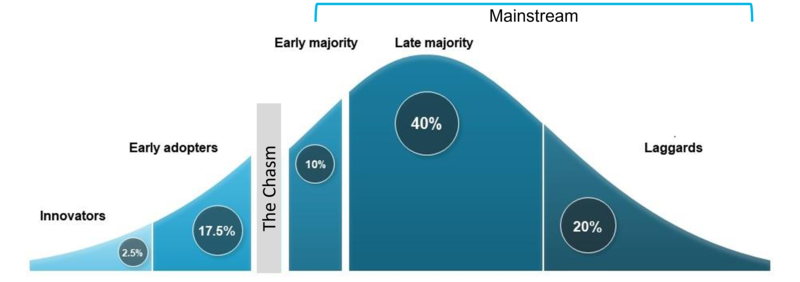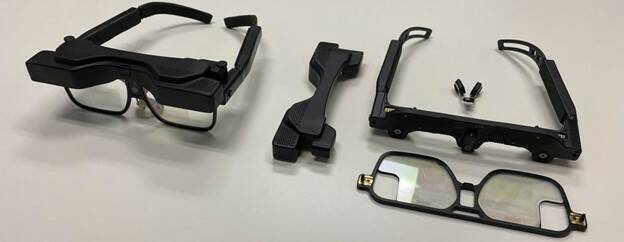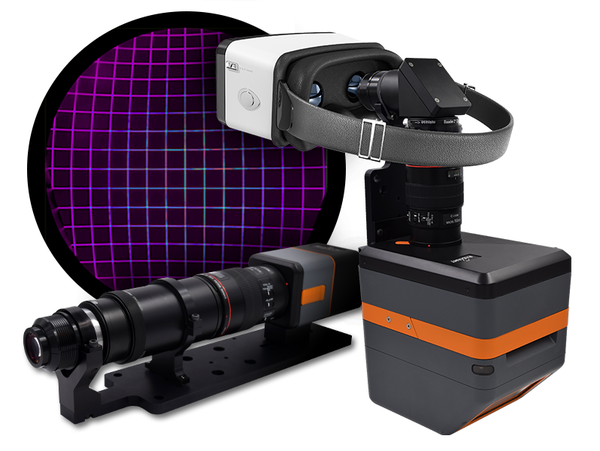Meeting Customer Quality Expectations for AR/VR Displays
All signs are pointing forward for the augmented- and mixed/merged-reality (AR/MR) smart glasses market in the next year or so. When publications from Popular Science to Good Housekeeping are publishing their lists of the best smart glasses to buy, widespread consumer acceptance can’t be too far behind. Even if they aren’t yet a mainstream product category, AR/MR smart glasses are poised to start moving past the “innovator” and “early adopter” market phases. Will 2023 be the year they finally “cross the chasm” into “early majority” territory?

Industry analysts think so. The smart glasses market globally is forecast to grow by 13.5% (CAGR) to reach $25.8 billion by 2030.1 While industrial, medical, and military AR applications together will continue to lead the market, the consumer sector is picking up speed. With smartphones in virtually everyone’s pocket, interest is increasing in AR smart glasses, especially for retail, media, games and entertainment, and sports and fitness use.2
Increasingly, ‘modular design’ approaches by AR headset makers such as DigiLens, RealWear, and ThinkReality are making the technology more accessible to consumers. Hardware updates can easily be implemented by swapping out individual component modules, instead of each design iteration requiring an entirely new product model.3 For example, the DigiLens Design v1 includes three core modular parts that can snap together as easily as Lego® bricks:
- Frame: containing compute, batteries, and sensors
- Optics: featuring the company’s waveguides
- Display module: containing the display and light source.

Modular smart glasses components from DigiLens include the frame, optics, and display. (Image: RoadtoVR)
A key to breaking through into the consumer marketplace for many new technologies isn’t just the hardware, however, it’s the software. The idea of a “killer app” that drives adoption is a s relevant today as it was when the Super Mario Brothers game turned Nintendo into a household name and made the Nintendo Entertainment System (NES) the best-selling game console of its generation.
Is there a killer app for smart glasses? Some experts say there isn’t just one, but our dependence on multiple smartphone apps could tip the balance. For example, glasses maker Vuzix foresees that AR smartglasses will come to replace phones, offering much of the same functionality right in front of our eyes. “Today, everything from Google Maps to the latest dating app is customized to meet individual needs. These apps are starting to take advantage of Apple’s AR Kit and Google’s AR Core to connect their content to the real world. Augmented reality smart glasses are next in line to benefit from these technological leaps.”4
Quality Testing AR/VR Displays
For any technology product to succeed in the mainstream marketplace, however, it must meet consumer expectations for quality, performance, and reliability. Consumers have become accustomed to crystal clear, “perfect” display products, and expect no less from AR/VR devices. With AR/VR displays so close to the eye, even minute defects can be very noticeable.
To ensure display quality, developers and manufacturers need to conduct rigorous testing in both the R&D and production stages of the product. Yet AR/MR devices encompass a wide range of optics and architectures. The rapid evolution of components, technologies, and systems—from microLED to metalenses—is putting new demands on device developers. Radiant’s new XRE Lens offers a flexible solution for measuring the complete ecosystem of XR optical components as well as various optical configurations of XR (AR, VR & MR) devices.
Our patent-pending lens design incorporates a unique internal-focus mechanism with electronic control to instantly adjust the focus of the connected imaging system to multiple focal planes. Used with a ProMetric® imaging colorimeter or photometer and the TT-ARVR™ module of our TrueTest™ Software, the XRE Lens can be used to measure XR displays across a broad range of devices and visual performance criteria. Developers can measure brightness (luminance), chromaticity (color), contrast, clarity, and uniformity of the images displayed in AR/MR headsets. The unique design of the XRE lens enables it to match the position, field of view, and visual perception of the human eye.

Radiant’s TT-ARVR Software showing distortion grid test taken with our XRE Lens (back), and the XRE Lens shown in straight (non-folded) configuration with a ProMetric® Y Imaging Photometer (front left) and in folded (periscope) configuration with a ProMetric I Imaging Colorimeter (right).
To learn more about the unique challenges of measuring AR/VR displays and why Radiant developed its new solution, read the recent interview of Radiant’s Optics Development Manager, Eric Eisenberg. The interview was conducted by DSCC (Display Supply Chain Consultants) as part of their second annual AR/VR Display Forum. The interview was published in Display Daily.

CITATIONS
- AR and VR Smart Glasses Market, Market Research Future, August 25, 2022.
- “Heightened use of smartphones drives the augmented reality glasses market to US$384.1 Mn by 2032”, Future Market Insights Global and Consulting Pvt. Ltd., August 24, 2022.
- Joehnig, J., “Is 2022 the Year for Consumer AR Glasses?” ARPost, January 21, 2022.
- “AR Smart Glasses the Next Step in Smartphone Tech”, Vuzix.com, 2019. (Accessed September 28, 2022).
LEGO® is a trademark of the LEGO Group of companies which does not sponsor, authorize, or endorse Radiant Vision Systems or this website.
Join Mailing List
Stay up to date on our latest products, blog content, and events.
Join our Mailing List
